#hereditary prince pierre
Text
Four Year Anniversary Portraits

Moonwood Mill
Villa de Rois
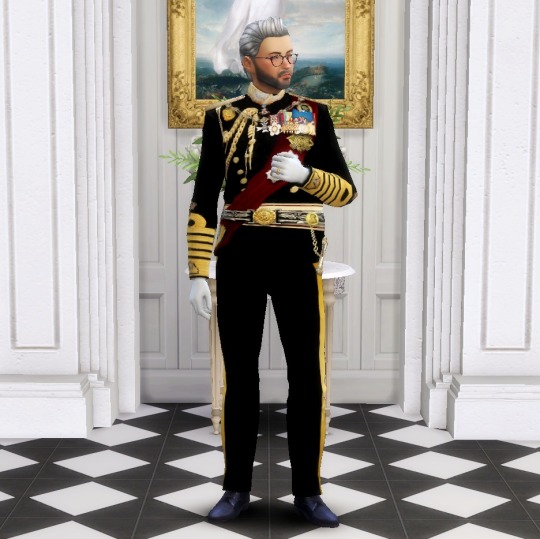

His Sovereign Highness, Hereditary Prince Pierre Biancheri
Full Name: Pierre Dartagnan Biancheri
Title(s): Hereditary Prince of the Principality of Moonwood Mill
Nickname(s): N/A
Birthday: February 6th
Residence(s): Villa des Rois (Moonwood Mill)
Previous Names/Titles: Grand Duke of Moonwood Mill
Parents: TSH Hereditary Prince Philippe & Princess Caroline Biancheri
Spouse: HSH Princess Andrea Biancheri
Children: Grand Duchess Martine Graziani, Duke Michel, & Duke Massimo Biancheri

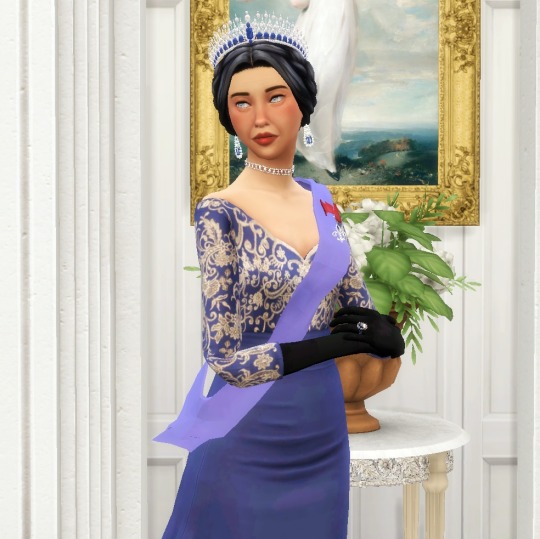
Her Sovereign Highness, Princess Andrea Biancheri
Full Name: Andrea Anna Jacqueline Biancheri
Title(s): Princess Consort of the Principality of Moonwood Mill
Nickname(s): N/A
Birthday: February 11th
Residence(s): Villa des Rois (Moonwood Mill)
Previous Names/Titles: Lady Andrea Rinaldi
Parents: Duke Alexandre & Duchess Jacqueline Rinaldi of LeGrande
Spouse: HSH Hereditary Prince Pierre Biancheri
Children: Grand Duchess Martine Graziani, Duke Michel, & Duke Massimo Biancheri

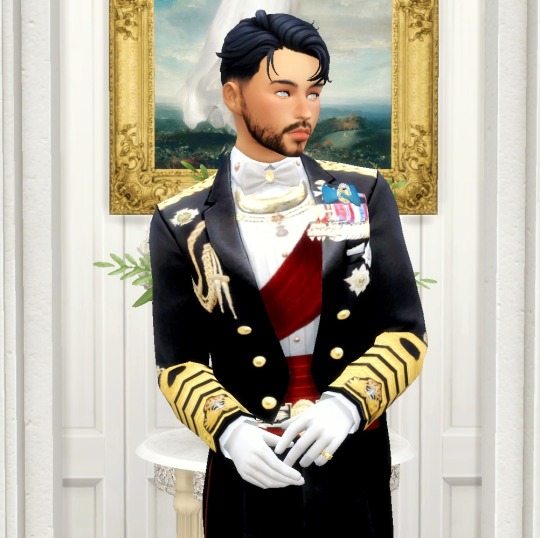
HRH Duke Michel Biancheri
Full Name: Michel Pierre Julien Biancheri
Title(s): Royal Duke of the Principality of Moonwood Mill
Nickname(s): N/A
Birthday: November 27th
Residence(s): Villa des Rois (Moonwood Mill)
Previous Names/Titles: N/A
Parents: TSH Hereditary Prince Pierre & Princess Andrea Biancheri
Spouse: N/A
Children: N/A
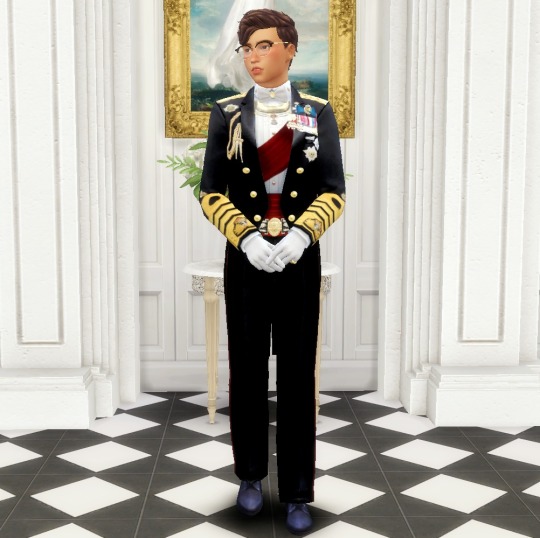

HRH Duke Massimo Biancheri
Full Name: Massimo Andre Frederic Biancheri
Title(s): Royal Duke of the Principality of Moonwood Mill
Nickname(s): Mimo
Birthday: January 25th
Residence(s): Villa des Rois (Moonwood Mill)
Previous Names/Titles: N/A
Parents: TSH Hereditary Prince Pierre & Princess Andrea Biancheri
Spouse: N/A
Children: N/A
#ts4#ivanov legacy#ts4 simblr#ts4 legacy#anniversary portrait#4 year anniversary#hereditary prince pierre#princess andrea#duke michel#duke massimo
3 notes
·
View notes
Text
Royal Residences of the Continental Royals part 2 for the anon <3
in this edition: the Spanish, Swedish, Monegasque and Luxembourg
Spanish:
The Royal Palace of Madrid: used for official functions
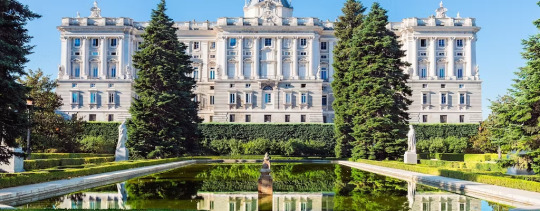
Zarzuela Palace: official residence of Queen Sofia and Princess Irene of Greece (Sofia’s sister)

Prince’s Pavillion: located in the same complex of Zarzuela Palace, official residence of King Felipe VI and his family
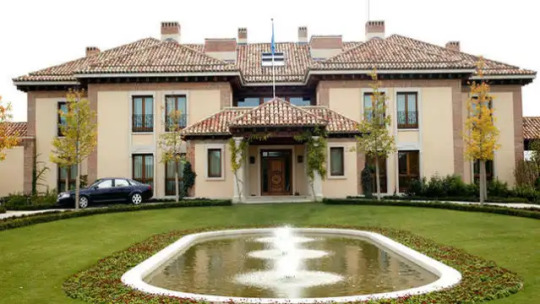
Marivent Palace: official summer residence of the family in Palma de Mallorca; with compounds for all members of the main branch of the family

Son Vent: summer residence of King Felipe, located on the grounds of Marivent Palace
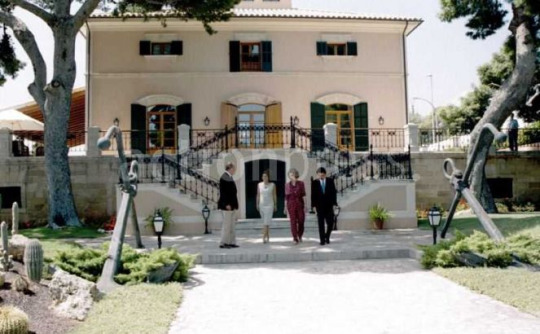
Alcazar of Seville: official residence of the King in Andalusia
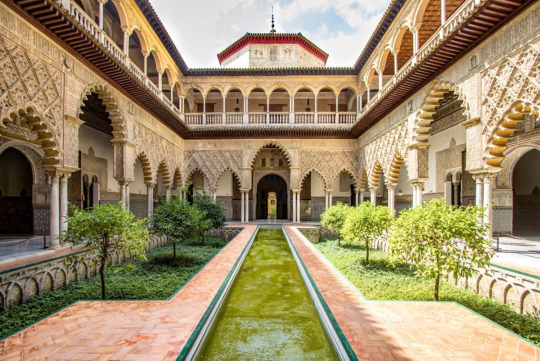
Albeniz Palace: official residence of the King in Catalonia
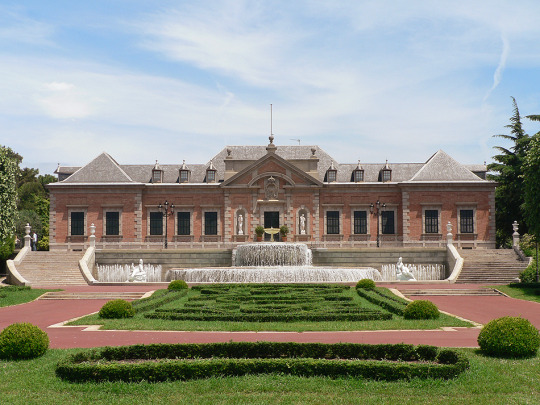
La Mareta: part of Patrimonio Nacional, but not frequently used

Swedish:
The Royal Palace in Stockholm: their official “home” but none of them actually live there; used for official functions

Drottningholm Palace: official residence of the King and Queen
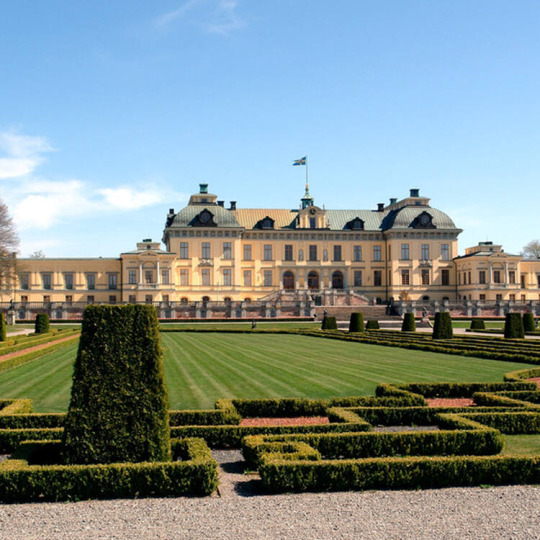
Haga Palace: official residence of the Crown Princely Family

Solliden Palace: summer residence of the family

Stenhammar Castle: summer residence of the King and Queen

Villa Solbacken: primary residence of Prince Carl Philip and his family; previously belonged to Princess Lilian, Duchess of Halland.

Villa Mirage: privately owned villa in St. Maxime, France

Prince Carl Philip and Princess Sofia’s new shack in Älvdalen:
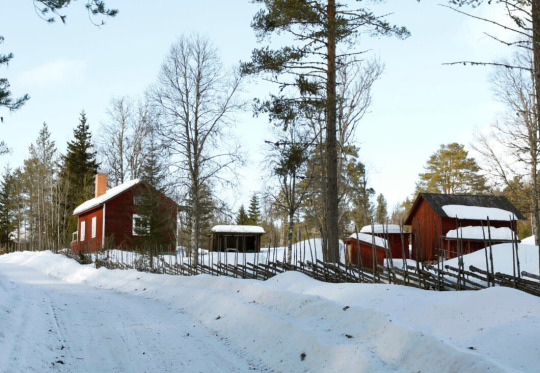
Rosendal Palace: Carl Philip and Princess Sofia’s former home

Ökenäs Gård: Prince Carl Philip and Princess Sofia’s farm

Storlien: ski resort where they usually spend Easter

Monegasque
The Prince’s Palace: official residence of Prince Albert II and his family

Villa Clos St. Pierre: home of Princess Caroline

Villa Clos St. Martin: home of Princess Stephanie
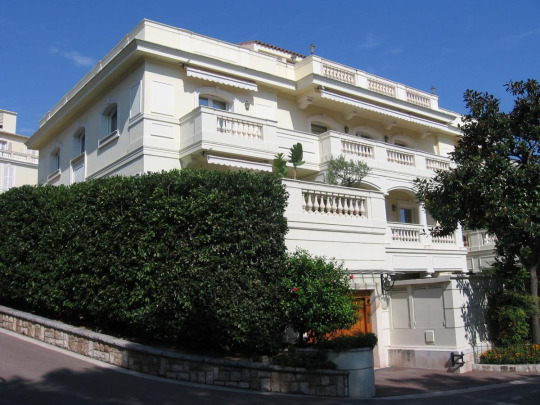
Château de Marchais: private property of the Sovereign Prince (fun fact: this state is 6x the size of Monaco)

Roc-Agel: privately owned villa in France

Luxembourg:
The Grand Ducal Palace: used for official functions

Berg Castle: official residence of the Grand Duke and his family

Fischbach Castle: official residence of Hereditary Grand Duke Guillaume and his family
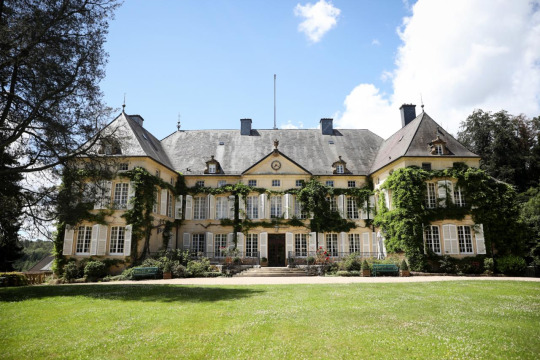
(one more pic bc I'm obsessed @ guillaume and stephanie pls adopt me)
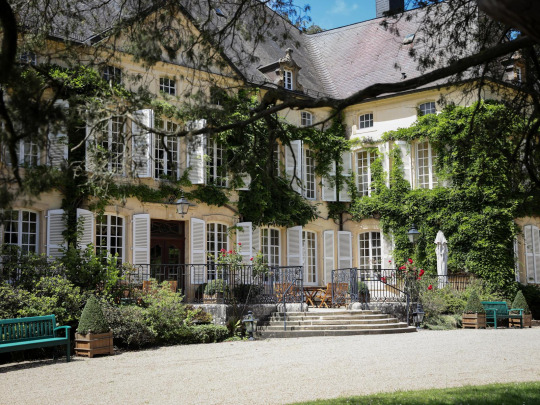
Cabasson: holiday villa on the Cote d’Azur

#there ya go anon#seems like cp and sofia have 3 homes not 5 sorry to dissapoint#I felt like a stalker doing this#researching where does x royal live#pls don't worry interpol this was for research purposes only!!!#royal residences#srf#swrf#mpf#lgdf#spanish royal family#swedish royal family#monegasque princely family#grand ducal family of luxembourg
64 notes
·
View notes
Photo
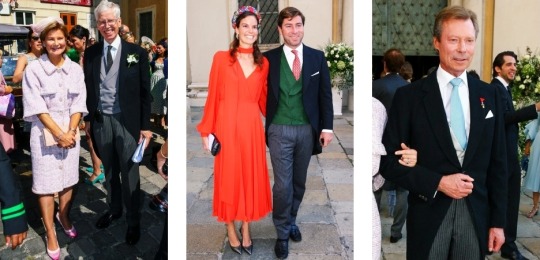
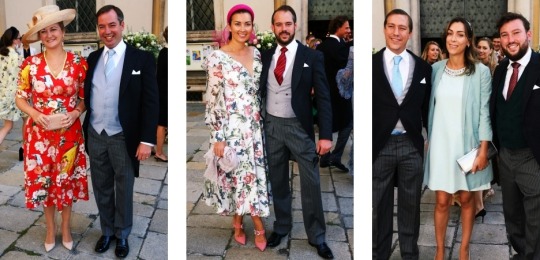
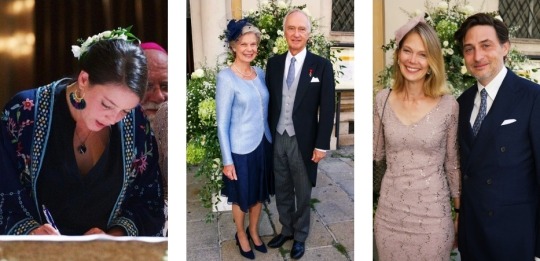


Royal Guests at the wedding of Princess Maria Anunciata of Liechtenstein and Mr. Emanuele Musini on September 4, 2021 in Vienna
first row:
Princess Margaretha & Prince Nikolaus
Princess Marie Astrid of Liechtenstein & Ralph Worthington
Grand Duke Henri
second row:
Hereditary Grand Ducal Couple
Prince Felix & Princess Claire
Prince Louis & Scarlett Lauren Sirgue, Prince Sebastien
third row:
Princess Alexandra
Archduchess Marie Astrid & Archduke Carl Christian
Count Rodolphe & Countess Marie-Christine
fourth row:
Prince Henri & Princess Gabriella de Bourbon Parme
Prince Jean & Countess Diane de Nassau
Prince Guillaume & Princess Sibilla
fifth row:
Prince Lorenz & Princess Laetitia Maria
Princess Elisabetta & Prince Amedeo, Princess Maria Laura
Pierre Casiraghi & Beatrice Borromeo
36 notes
·
View notes
Photo
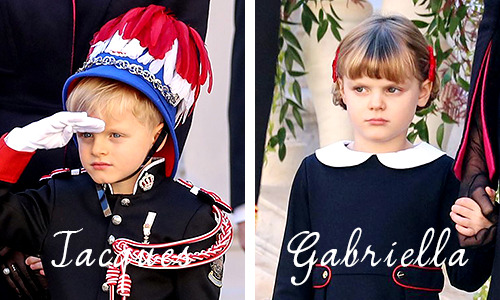

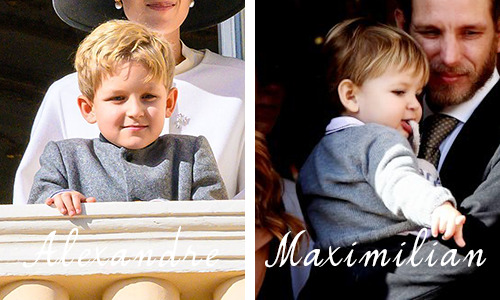

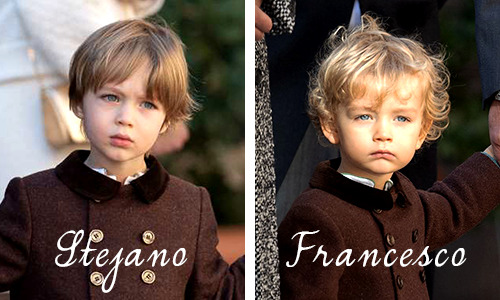
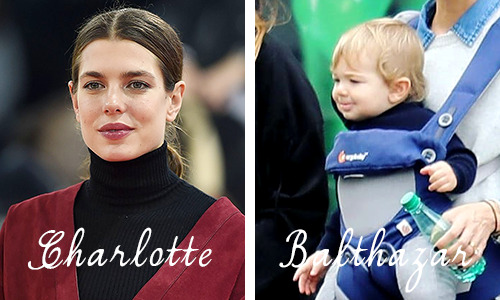


Line of Succession to the Monegasque throne after Prince Albert II:
♕ Prince Jacques, Hereditary Prince of Monaco, Marquis of Baux (b. 2014)
Princess Gabriella, Countess of Carladès (b. 2014)
Caroline, Princess of Hanover (b. 1957)
Andrea Casiraghi (b. 1984)
Alexandre Casiraghi (b. 2013)
Maximilian Casiraghi (b. 2018)
India Casiraghi (b. 2015)
Pierre Casiraghi (b. 1987)
Stefano Casiraghi (b. 2017)
Francesco Casiraghi (b. 2018)
Charlotte Casiraghi (b. 1986)
Balthazar Rassam (b. 2018)
Princess Alexandra of Hanover (b. 1999)
Princess Stéphanie, Countess of Polignac (b. 1965)
Louis Ducruet (b. 1992)
Pauline Ducruet (b. 1994)
(Updated: Apr 2021)
86 notes
·
View notes
Text
Medieval Brittany
Brittany was a region with strong traditions of independance, with an ethnic identity, a language and culture of its own. Formal integration into and continued interaction with the Carolingian empire, and with adjacent regions, nevertheless ensured that the political and social institutions of Brittany were similar to those prevailing elsewhere in western Francia. This was especially true of the eastern portion of the medieval duchy (the counties of Rennes and Nantes) which were within the Carolingian Breton march.
Brittany was severely affected by Viking attacks, and when ducal authority was re-established in the 930s (with the first ducal charters surviving from the 940s), it remained fragile. Dynastic disputes caused the political fragmentation of the duchy into counties. Comital authority was in turn diminished by the appearance of adulterine castellanies, which by the mid-twelth century constituted independant baronies. Comital authority further suffered from the pressures of resisting claims to overlordship pursued by both the dukes of Normandy and the counts of Anjou in the tenth and eleventh centuries. The process of fragmentation was halted and reversed from the mid-eleventh century, when intermarriage among the comital houses resulted in the ducal title vesting in one individual, Duke Alan IV (1084-1112). It remained for the ducal dynasty to revive central authority. The long and stable reigns of Alan IV and his son Conan III (1112-1148), ably assisted by the dowager-duchess Ermengard, daughter of Count Fulk IV of Anjou, saw progress in this direction.
A succession dispute following Conan's death not only undid the dukes' achievement, but also created the circumstances in which the claims to overlordship by neighboring princes could be fulfilled in the person of Henry II, king of England, duke of Normandy and count of Anjou. Between 1158 and 1166, Henry II annexed Brittany to his continental possessions, marrying his younger son Geoffrey to Constance, heiress of the duchy. The Plantagenet regime in Brittany further consolidated important links with the Anglo-Norman kingdom, which began with grants of lands in England to Bretons who had supported William the Conqueror in 1066 and later his son Henry I. The largest bloc of English lands, the honour of Richmond, pertained to the dukes of Brittany by hereditary right after 1146, but other Bretons held English lands in chief of the crown independantly of Richmond.
The Plantagenet regime came to an end in 1203, in consequence of King John's murder of his nephew Arthur, the son of Duke Geoffrey and Constance. From that point, Brittany was indisputably subject to Capetian authority, which could now be exercised directly. Brittany had at all times acknowledged Capetian sovereignty- even the Plantagenet rulers had rendered homage for the duchy to the kings of France- but typically of the principalities, this sovereignty was purely nominal until the early thirteenth century. Nevertheless, after the marriage of infant heiress, Alix, to Pierre de Dreux, a Capetian cadet, in 1213, Brittany was allowed a large measure of autonomy, subject to the continued acknowledgement of Capetian sovereignty, and the fourteenth and fifteenth centuries would see the golden age of ducal Brittany.
Elizabeth M. Hallam & Charles West- Capetian France, 987-1328
#x#xi#xii#xiii#elizabeth m. hallam#charles west#capetian france#history of brittany#alan iv of brittany#conan iii of brittany#ermengarde d'anjou#henry ii d'angleterre#geoffroy plantagenêt#constance de bretagne#arthur de bretagne#alix de thouars#pierre de dreux
7 notes
·
View notes
Text
KATIE’S TOP 10 15 BEST ROYAL WEDDING DRESSES OF ALL TIME
15. Princess Madeleine in Valentino (Sweden, m. Christopher O’Neill, 8 June 2013)

The only thing I can say I hate genuinely about this dress is that it never sat right off her shoulders. It looked like it was slipping and sliding all day. Other than that, wow, this dress is gorgeous. The color is beautiful, combined with that fantastic tiara and gorgeous veil. Lace but not too much lace. Absolutely beautiful!
14. Mette-Marit Tjessem Høiby in Ove Harder Finseth (Norway, m. Crown Prince Haakon, 25 August 2001)
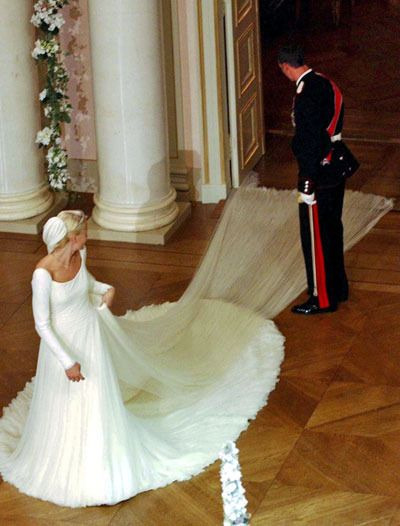
I love a simple wedding dress, and Mette-Marit really hit it out of the park with hers. I love that she was involved with the design. I love that she accessorized really minimally to let the dress and that fabulous veil shine. The only thing I’d like to have seen is a bit more bling in the tiara, but she still looked absolutely beautiful!
13. Countess Olympia von und zu Arco-Zinneberg in Oscar de la Renta (France/Austria, m. Prince Jean-Christophe Napoleon Bonaparte, 19 October 2019)
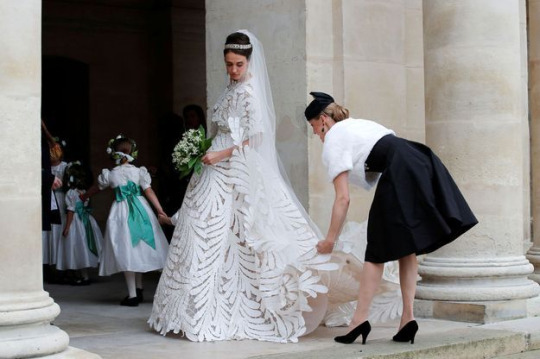
This dress is so far out of my comfort zone, but it is absolutely fabulous. So quirky, so intricate - I’m in love! It’s classic Oscar de la Renta and it fits her beautifully. I’m not a fan of what the cape does in the chest area and I would never, ever wear this myself but it’s a work of art! Absolutely fabulous!
12. Camilla Parker-Bowles in Anna and Robinson Valentine (United Kingdom, m. The Prince of Wales, 9 April 2005)

I think this is stunning for a second wedding. The color, the gold accents, the classic Philip Treacy headpiece - absolutely magnificent. It looks bridal without being juvenile, and it’s gorgeous while still being appropriate for the occasion. I’ve always loved it!
11. Crown Princess Victoria in Pär Engsheden (Sweden, m. Daniel Westling, 19 June 2010)

The combination of the simplicity of Victoria’s gown with the Cameo tiara and that gorgeous, intricate bouquet is exquisite. The Cameo needed something simple to let it shine and Victoria and Engsheden did not disappoint. The color and material were perfection and this is how you do an off-the-shoulder short-sleeved look! Combined with no necklace to really let the whole look shine, this is one of my favorites!
10. Beatrice Borromeo in Armani Privé (Monaco, m. Pierre Casiraghi, 1 August 2015)

This is the first of three (yes, three) mentions of Beatrice Borromeo on this list. She’s gorgeous and would have made a beautiful bride wearing a trash bag but this dress is something else. It’s classic bridal with just a touch of high fashion and I love it. That lace is so, so delicate, only someone as graceful as Beatrice could have pulled it off. Her veil is gorgeous and although I missed a tiara, she’s literally sparkling in the delicate, shimmery fabric!
9. Catherine Middleton in Sarah Burton for Alexander McQueen (United Kingdom, m. Prince William, 29 April 2011)

What a love affair the world has with this dress, the modern icon of all wedding dresses! It would have been easy to overwhelm Kate’s figure with a full skirt, but Sarah Burton nailed the proportions perfectly. The lace is exquisite from her neck to her shoes. I love how she brought back lace sleeves in bridal fashion. The peplum detail on the back of the skirt is incredible. It fit her like a second skin in the best way and she looked every bit the fairytale princess walking down the aisle. Her veil was just the right length, too - not too long but not too short. It’s no wonder this is the new iconic wedding dress!
8. Meghan Markle in Clare Waight-Keller for Givenchy (United Kingdom, m. Prince Harry, 19 May 2018)

I’ve said before that I love a simple wedding dress, and Meghan did not disappoint. The boat neckline was so flattering on Prince Harry’s bride, and the color and fabric were just the right combination for her. I stood on the Long Walk during their carriage procession, and I could see Meghan coming from a mile away because she was literally shimmering in the sunlight. I wish it was better tailored - my only true grievance - but everything else was gorgeous. And that veil! What can I say about that veil? It literally sparkled in the sunlight going up the stairs to the chapel. I can’t say enough - and the fact that it included a patch of the dress they wore on their first date? My heart!! If this was better tailored, it would have been top 5.
7. Princess Eugenie in Zac Posen (United Kingdom, m. Jack Brooksbank, 12 October 2019)

The first reception dress of the list! Eugenie’s ceremony dress was pretty, but not my style. This, however... how could one go wrong with a pale blush cape dress that fit her perfectly? She looks like an ethereal goddess, like she’s descended from the clouds to grace us with her presence. The color is magnificent, the fabric so delicate. I don’t know how it’s possible to look so beautiful and so comfortable at the same time, but Eugenie and Zac Posen really pulled it off. This was such a pleasant surprise when comparing it to her ceremony dress - I loved it!
6. Beatrice Borromeo in Valentino (Monaco, m. Pierre Casiraghi, 25 July 2015)

Never in my life could I have imagined myself picking a purple wedding dress in a list of favorites, but here we are. Beatrice’s civil wedding dress was everything one could have expected from her - delicate, feminine, with an almost fairy-like quality that many couldn’t even dream to pull off. She literally looks like a goddess. The lace overlay cape was something out of a dream, and the natural flow of the skirt is magnificent. I love that the lace detail up top matches the lace detail at the bottom. Ethereal is the word I would use to describe this dress - absolutely heavenly!
5. Elisabetta Rosboch von Wolkenstein in Valentino (Belgium, m. Prince Amadeo, 5 July 2014)

The delicate details of this dress are everything! I love the matching neckline with the sleeve structure and the chest/mesh detail. I especially love how those details match the veil outline. I usually don’t like mesh paneling very much, but Elisabetta pulled it off beautifully. The simplicity of the skirt is complemented by the gorgeous overlay. Plus, there’s something so gorgeously simple about the twist in her hair that I just adore. The skirt is flattering and of the right proportion, and I love how vibrant the white is. This is truly one of my favorites - so delicate and feminine!
4. Claire Lademacher in Elie Saab (Luxembourg, m. Prince Felix, 21 September 2012)

Y’all know I wasn’t going to get through this list without my main man Elie Saab. This dress is truly a masterpiece, a piece of premier artistry. The lace detail is simply unparalleled, and it being head-to-toe does nothing to detract from the magnificence that is Princess Claire and Elie Saab. I love the high neckline and the minimalistic jewelry. Plus, that tiara with her dark hair and that gorgeous veil? *chef’s kiss* magnificent. Absolutely otherworldly.
3. Countess Stéphanie de Lannoy in Elie Saab (Luxembourg, m. Hereditary Grand Duke Guillaume, 20 October 2012)

God, what a dress. What can I even say? That lace? Incredible. The skirt? Fantastic. The train? Phenomenal. Veil? Unreal. I really don’t have anything technical to say about this other than good Lord, it is out-of-this-world, show-stopping fabulous. Stéphanie’s usual style is not my favorite but it’s truly all forgiven because she pulled out the big guns with this royal wedding dress, the epitome of what a royal wedding dress should be. The only thing that heightens this above Princess Claire’s Elie Saab masterpiece is the color - it’s so gorgeous, so flattering, I have no words. Also, I’m a sucker for this kind of veil - mounted on the back of her head and thin enough to be transparent. The whole thing is mesmerizing - an absolute work of art.
2. Beatrice Borromeo in Armani Privé (Monaco, m. Pierre Casiraghi, 1 August 2015)

Beatrice’s second reception gown rounds out my favorites of hers from her wedding week. I love the simple lines of this dress - the v-neck is so flattering and I love that the straps are thin without being too thin. The A-line cascades down through the skirt beautifully, the belted waist ties the full thing together. The construction is truly magical, a genuine workpiece. I can’t talk about this dress without discussing the cape-like effect of the back. She looks like she is walking through the clouds with the gorgeous wispiness of the cape. I love that the pieces are separate, and I can only imagine what they looked like in motion. Armani truly outdid himself with this - it was perfectly constructed from top to bottom. A true masterpiece.
1. Lady Gabriella Windsor in Luisa Beccaria (United Kingdom, m. Thomas Kingston, 18 May 2019)

And finally, last but certainly not least - the inspiration for my future wedding dress if I ever get married. Lady Gabriella stopped me in my tracks when I saw this dress. Literally, I was walking and looking at my phone, and I stopped short when I saw it. The cape is just divine, that’s the only word I can use to describe it. It’s like Beatrice’s second reception dress, but kicked up a notch with that absolutely inimitable lace overlay. The skirt is proportioned beautifully, and I love how it flatters her figure without suffocating her. The shoulder/cape detail is heavenly. I could stare at this dress all day long, it is so magnificent. It is delicate and feminine with magnificent construction, structured and lined beautifully with an element of softness and romance that cannot be paralleled. It’s no wonder this is my favorite royal wedding gown of all time. It’s just extraordinary. I’ve done my best to explain in words but I simply cannot. This dress is incredible. Heart-stopping, show-stopping, jaw-dropping magnificent.
#my post#royal fandom#katie's top 10-15#katie's best royal wedding dresses#lady gabriella windsor#beatrice borromeo#hereditary grand duchess stephanie#princess claire#archduchess elisabetta#princess eugenie#meghan markle#duchess of sussex#kate middleton#duchess of cambridge#crown princess victoria#princess madeleine#camilla parker bowles#duchess of cornwall#countess olympia bonaparte#crown princes mette-marit#british royal family#monegasque princely family#grand ducal family of luxembourg#belgian royal family#swedish royal family#french royal family#norwegian royal family
94 notes
·
View notes
Photo

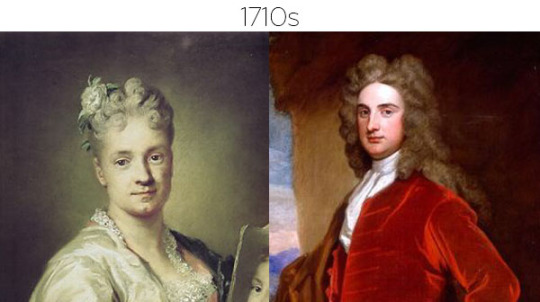
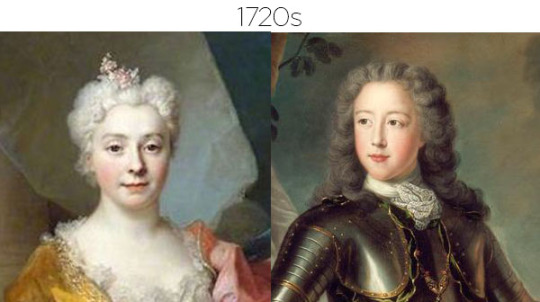
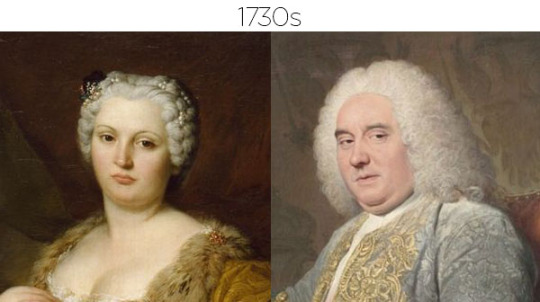

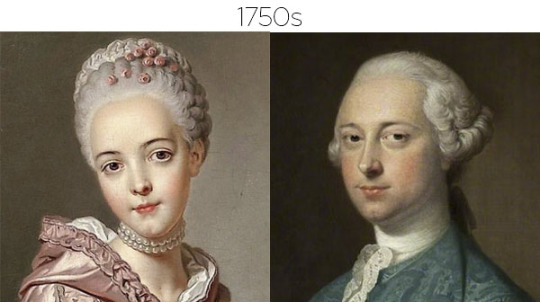
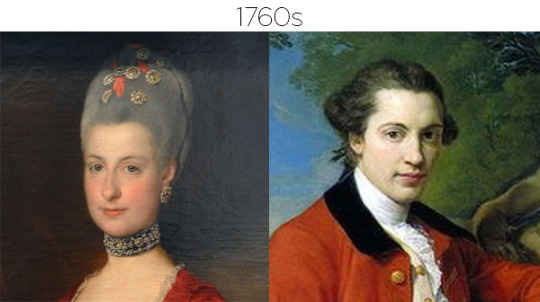


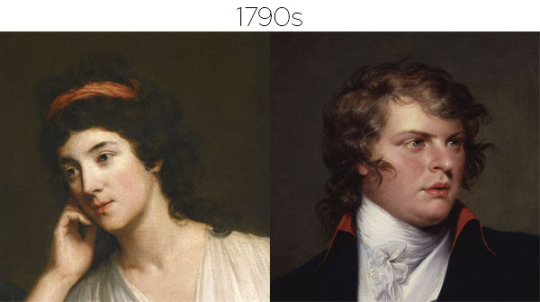
Hairstyles of the 18th Century
As requested, here’s a simple and quite basic timeline of hairstyle during the 18th century. It is mostly eurocentric, because most of fashion moved from Europe (especially France) to the rest of the world (even if a style was not originated there).
I thought to give you all a glimpse into the main changes of the century, of how hairstyling and wigs changed through the years, and how different the looks from the early century are from the ones of the late century: how we can see the change from the Baroque to the Regency era, and the rise and fall of the Rococo style.
So, in the images above, you can see a detail of a portrait of woman and a man from each decade of the century, starting in the 1700s and ending with the 1790s. Of course there are several examples for each decade, but I chose to use just two as a way of simplifying. But you can see the full paintings and more references in this Pinterest board I made.
I like to divide the century style in four parts just because that’s how I get it better: early, mid and late century, and the turn of the century. And of course each with its own cute little subtitle.
EARLY 18TH CENTURY a.k.a. fuck yeah the Baroque is still here (1700s-1730s)
WOMAN - For the late 17th century and early 18th century, the key hairstyle is the fontange, or top-knot in England, which is a hairstyle with the front hair piled up high, and in the late 17th century accompanied by a lace hairddress that could reach quite interesting heights. The hairstyles we see in the portraits above, are fontanges, but the frelange headdress got smaller and smaller until it disappeared.
The hair lost height until the 1720s, when low, simple hairdos took place, but the curls were not lost, they just turned into the tête de mouton.
MAN - the full bottomed wig is THE wig of the early 18th century, with its fluffy curls in natural colours or white, almost waist length and middle parted. This style was originated by Louis XIII in 1624, when he lost his hair it turned from the natural hair to wigs for everyone, since such volume is hard to achieve and keep. So, more is more. This style was worn pretty much until the 1730s.
During this time we see the emergence of the bag wig in the 1720s (the hair was tied at the back and then put in a small black bag, curls were made over the ears), and the bob wig (hair falling just below the ears, it had curls or a simple frizz all over) begins to be worn in the 30s
MID 18TH CENTURY a.k.a. never enough curls /1740s-1750s)
WOMEN - During this time, the hair was worn in soft waves with little or no height, and in the back it was arranged in small curls, a twist or a braid pinned to the head. But, if you could encapsulate THE hairstyle of the mid century, it would be the tête de mouton, with its close-fitted style of curls in neat rows, and the powdered with white powder (remember this look from Marie Antoinette?). This style was immortalised by Madame de Pompadour, and with her dead in 1764, this style went out of fashion for the sky-high styles of the rococo.
MAN - From the 40s-60s, the hair became bigger, the Ramillies wig (tied the hair in a plait at the back) came into fashion (even though it existed before, and was prefered by military men) with its tie in the back and the curls over the ears, which became THE mens hairstyle for the 18th century, or at least the one we all easily recognise.
LATE 18TH CENTURY a.k.a. we do not know the limits of things anymore (1760s-1780s)
WOMEN - During the 1760s, the high styles began to appear, being about 1/4 or 1/2 the length of the face. It was styled in an egg shape and was pretty much simple with the styling with a few decorations. But oh, the 1770s came, and HUGE hair became all the rage, going to 1 1/2 times the length of the face, styled in the shape of an air balloon. To achieve the height cushions or toques were used: attached to the top of the head, then the hair (natural or false) was curled, waved, or frizzed, and piled over the cushion, the back of the hair was set in curls and angled towards the back of the hair, and then decorated with all kinds of things. And I mean that, all kinds of things: from bows and ribbons to ships and bird cages. These styles were worn for days or weeks at a time, and were styled into allegories of current events (vaccinations? done! air balloon? done! zodiac? done!). This style was called pouf, pouffe, or toque.
In the 1780s the volume became horizontal, instead of vertical, and out very favourite hedgehog style, or coiffure à l’enfant, was born: a halo of of frizzy curls around the face, a small hank of longer hair left straight or in ringlets. The name coiffure à l’enfant was given by Marie Antoinette’s coiffeur Léonard Autie, when she gave birth to the dauphin and she lost a lot of hair and he made this hairstyle for her (which she wears in her portrait by Louis Elisabeth Vigée-LeBrun wearing a chemise à la reine). But, like a lot in fashion, the style can be seen a few years earlier, so it’s likely that that was just the same that stuck. Even though the style of the 1780s was supposed to be more natural, the hedgehog could be really REALLY big, and fake hair was used to achieve that volume.
MEN - Men’s hair went up as well, not as high as women’s BUT certainly higher. We see the volume of the pouffe in men’s hair at the top of the head, with pigeon wings (curls over the ears) and the rest of the hair tied in the back. This is the clear origin of the 1950s Pompadour hairstyle. Power was all the rage in many colours, and wigs were desirable in white or grey, but natural colours were accepted as well, just need to powder it.
TURN OF THE CENTURY (1790s-1800s) a.k.a. oh shit, that was too much! Let’s get minimal
WOMEN - After French Revolution powder went out of fashion in France, and in England it happened in 1795 when it was taxed even though it was already used less and less. This was the start of what we know as Regency fashion, which was an absolute contrast of the silhouettes worn in most of the century. Ad hair was not different.
The hedgehog was still worn, but the volume became more natural, and the hair was decorated simply with ribbons. Another style was the hair being worn in ringlets framing the face in a more restrained way, and a chignons in the back, showing off the neck. The hair could also be cut short, like very famously Lady Caroline Lamb did, ina a style called à la Titus, that became fashionable for men and women. Very Jane Austen-esque. The colours were natural with the powder gone, and this was the beginning of the Romantic period.
MEN - The powder was out of fashion, so no more white, grey or colourful hair for men. With the discovery of Pompeii’s ruins, we see a renaissance for classical and hellenic references during the 18th century, and we see that in women’s white fashions and curls, inspired in Greek and Roman sculptures, and in men we see short hair for the first time in a LONG time, inspired by ancient senators and gods. In 1795 with the powder tax, men potested cutting their hair (I mean, no hair, no need for powder), and we see the rise of the Bedford crop (a short cropped hairstyle with curls, parted to the side, styled with wax), started by the Duke of Bedford and then followed by his friends.
The layered short curly hairstyle called à la Titus, became famous while being worn by actor François-Joseph Talma as Titus Junius Brutus in Voltaire’s “Brutus”, shocking audiences with his short natural hair, also known as the Brutus hairstyle.
Formal court dress still required a powdered wig, as well as some professions and older and military men. But, by 1812 the age of the wig was gone.
_________________________________________________________________
FINAL NOTES: If you’re using this a guide for writing/art or a reference for how to style your hair, remember that these dates are not absolute, and that the beginnings and endings of the decades have a lot of mixing styles. So, for example, you can still have a hedgehog style in the 1790s, even though it was not THE hairstyle of the decades, and of course the portraits of the time clearly show this.
Images, from top:
Marie-Anne Mancini, duchesse de Bouillon (présumé) , ca. 1700, Nicolas de Largillière.
Sir John Chardin, ca. 1703, Unknown Artist.
Self-Portrait with sister, 1715, Rosalba Carriera.
Sir John Rushout, 4th Baronet, 1716, Sir Godfrey Kneller.
Madame Isaac de Thellusson, née Sarah le Boullenger, 1725, Nicolas de Largillière.
Portrait of Léopold Clément, Hereditary Prince of Lorraine, ca. 1720, Pierre Gobert.
Portrait of Giovanna Bagnara, 1739, Pierre Subleyras.
Portrait of Jean-Gabriel du Theil, 1738-1740, Jacques André Joseph Aved.
Mademoiselle Louise Jacquet”, 1748-1752, Jean-Étienne Liotard.
Francis Greville, Baron Brooke, later 1st Earl of Warwick, 1741, Jean-Marc Nattier.
Portrait of a Girl Holding a Spaniel, 1750s, by Alexander Roslin.
Sir Henry Oxenden, ca. 1755, Thomas Hudson.
Maria Christina, Duchess of Teschen, 1766, Marcello Bacciarelli.
Portrait of Edmund Rolfe, 1761, Pompeo Batoni.
Portrait of Anne, Countess of Chesterfield 1777 - 1778, Thomas Gainsborough.
A Young Man, presumed to be ‘John Bertram’, 1773, John Smart
A Lady, 1785, John Smart.
Jean-Joseph Mounier, 1789, Jean-François Favre.
Portrait of a Lady, 1790s, Hugh Douglas Hamilton.
Portrait of Prince Augustus Frederick, Duke of Sussex, 1798, Guy Head.
#hairstyle#18th century#hair#hair and makeup#wigs#womens hairstyle#mens hairstyle#1700s#1710s#1720s#1730s#1740s#1750s#1760s#1770s#1780s#1790s#1800s#georgian#regency#french revolution
1K notes
·
View notes
Photo

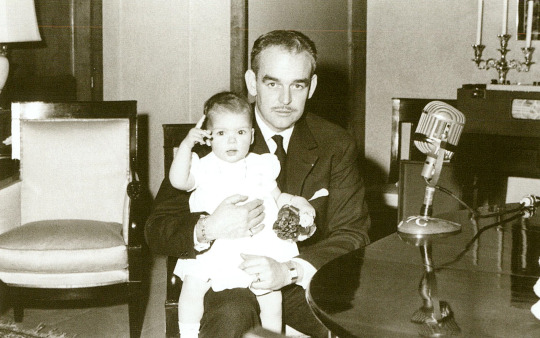
Birth of the Hereditary Prince Albert. 14th March 1958.
«On this beautiful morning of the 14th of March, as the sun flooded the Principality with its rays, the entire population awaited with excitement for the announcement of a happy event at Monaco's Palace. That day at 10.50 am, Princess Grace gave birth to a beautiful little Prince whose names were: Albert, Louis, Pierre. This marvellous and lucky news was known to the population through 101 gunshots launched from the middle of the battery of Fort Antoine, and with the sound of the bells from the Cathedral, from all the churches and chapels in the Principality as well as by the sirens from boats and yachts anchored at the port. A great happiness filled the Palace up and, like by magic, the whole Principality was suddenly adorned and flourished. H.S.H. the Sovereign Prince addressed Himself to the Monegasques and to the inhabitants of the Principality with the following message: “You can notice my excitement and my joy, as I let you know that the Princess, my very loved wife, has given birth to a little Prince [...]. I wish to share this joy with those who live in our nation, and especially the Monegasques who form, around the Sovereign Prince, a united family whose community of feelings has been shown along the years”. Thank God for this good news, shining testimony of His special favour. At that moment, a notification signed by H.S.H. the Sovereign Prince was solemnly hanged up on the Grand Palace Door as well as on the Door of the Little Quarters of the Prince's Palace [...]. After the official announcement of Prince Albert's birth, H.S.H. the Sovereign Prince appeared at a window of the Palace Mirrors Room with H.S.H. Princess Caroline dressed in white in his arms, and both received a warming and joyful ovation from the crowd standing on the Palace Square [...]. In the afternoon, H.S.H. the Sovereign Prince received in particular audience at the Family Room, the important people of the Principality who had come to give Him their most respectful and warmest congratulations» (Journal de Monaco, 17th March 1958).
14 notes
·
View notes
Photo
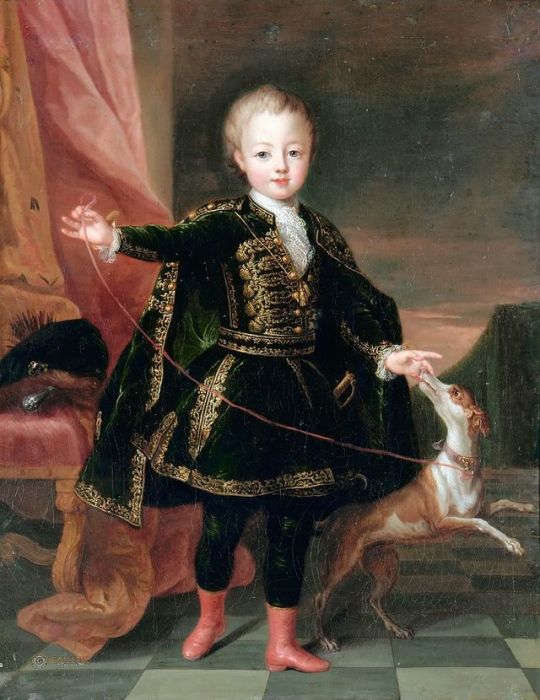
Portrait of Léopold Clément de Lorraine, Hereditary Prince of Lorraine (1707-1723) - Pierre Gobert
#Leopold Clement de Lorraine#Pierre Gobert#House Lorraine#XVIII century#people#portrait#paintings#art#arte
6 notes
·
View notes
Photo

a new family portrait of the Princely Family of Monaco
Prince Albert II, Alexandre Louis Pierre of Monaco
Princess Charlene Lynette of Monaco
Hereditary Prince Jacques Honoré Rainier of Monaco, Marquis de Baux
Princess Gabriella Thérèse Marie of Monaco, The Countess of Carladès
Photo: Eric Mathon / princely palace
#Prince Albert II#princess charlene#Princess Gabriella#Hereditary Prince Jacques#Princely Family of Monaco#monegasque princely family
1 note
·
View note
Text
29th World Stars Football Match
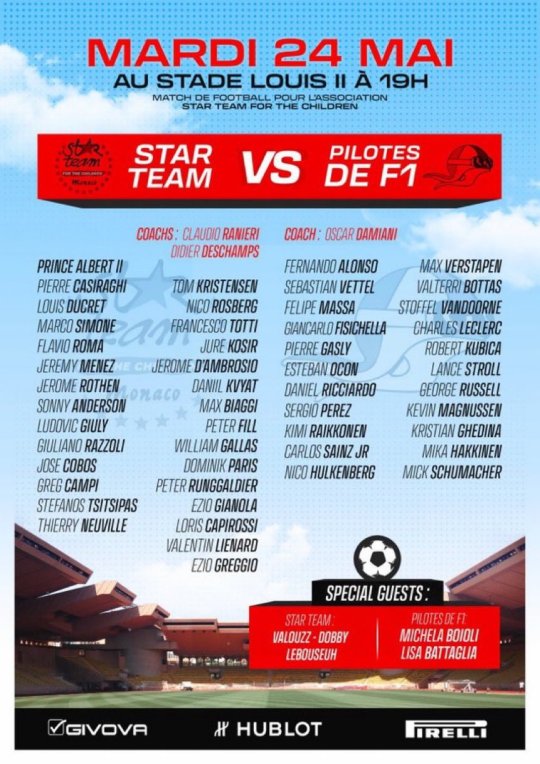

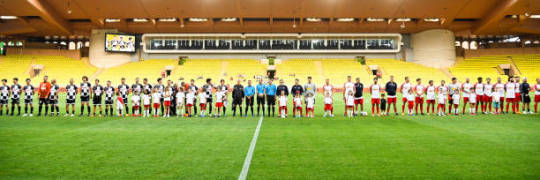

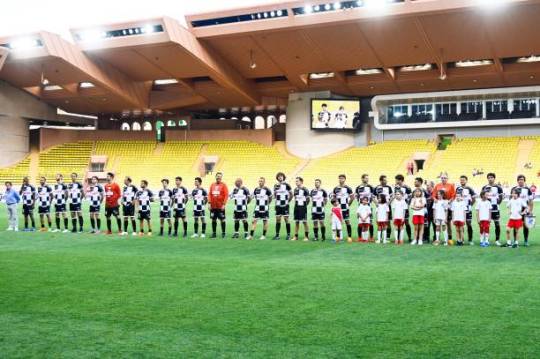
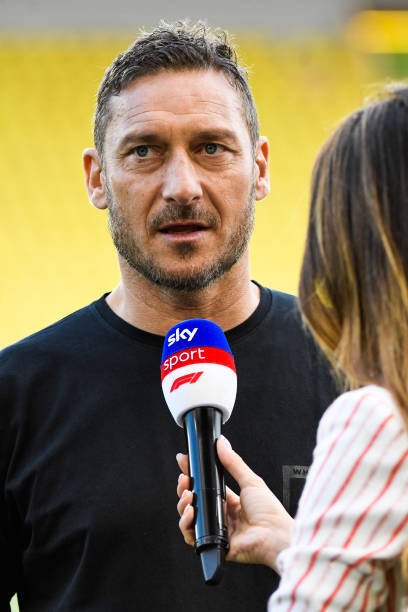
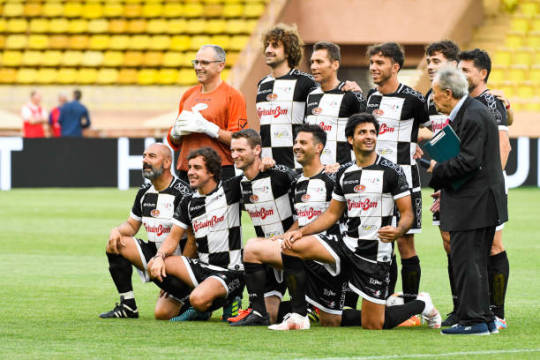

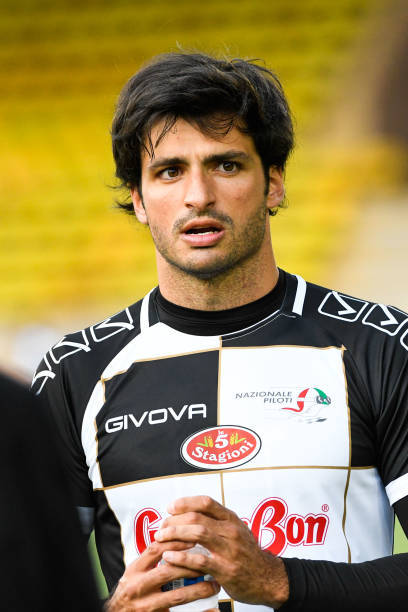










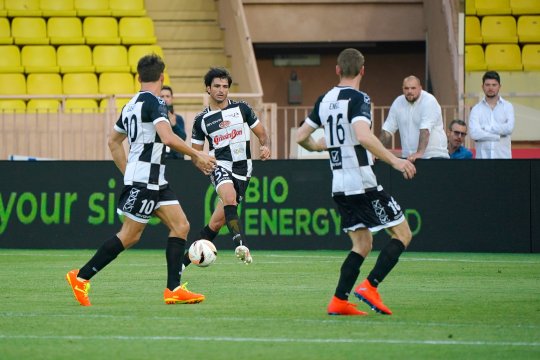





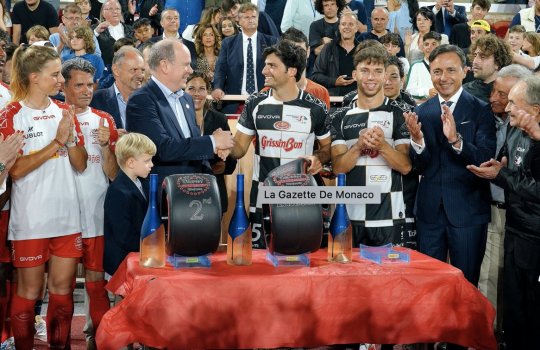

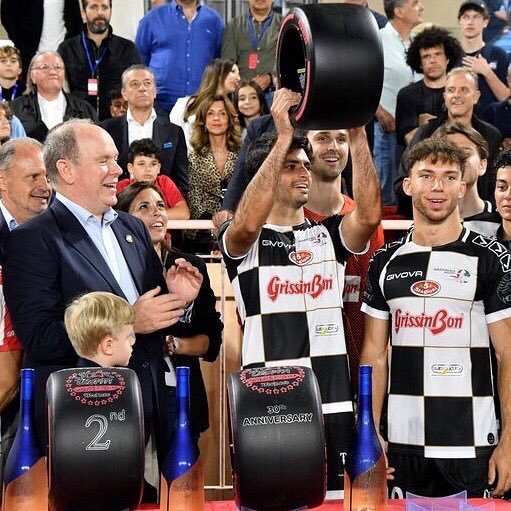
"A shower of stars" were invited, as if to mark the occasion after three years of non-attendance. Indeed, it was in 2019 that the athletes gathered for this great cause had the opportunity to tread the Monegasque ground for the last time. Last night, two teams competed for a good cause: the AS Star Team for the Children and the All Stars Formula 1 Drivers Team. In the latter, among the holders were therefore Charles Leclerc, Pierre Gasly, Carlos Sainz Jr. or Fernando Alonso. Before the fictitious kick-off, given by the Monegasque hand-jet champion Lisa Caussin-Battaglia, Prince Albert II and Hereditary Prince Jacques came to greet the athletes. During the handshake with Charles Leclerc, the pilot's supporters gave voice. On the field, it was his teammate Ferrari who distinguished himself with a double for his team, allowing his team to even out the score. Among the other scorers of the evening, we found, among others, Vincent Candela, Sonny Anderson and Grégory Campi. Final score: 3-3. (La Gazette de Monaco)
#29th World Stars Football Match#Charity Game#World Stars Football Match#Star Team for the Children#All Stars Formula 1 Drivers#Prince Albert II#Louis-II stadium#Stade Louis II#Monaco#football#fussball#fußball#foot#fodbold#futbol#futebol#soccer#Parma Calcio 1913
1 note
·
View note
Text
Three Year Anniversary Portraits!

Moonwood Mill, Part I
Moonwood Palace

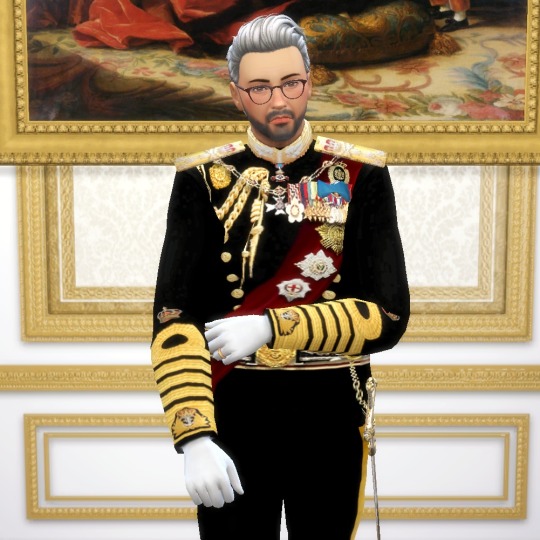
Name: Hereditary Prince Pierre Dartagnan Biancheri
Nickname: N/A
Title: Hereditary Prince of Moonwood Mill
Previous Names/ Titles: Grand Duke of Moonwood Mill
Residence(s): Villa des Rois, Moonwood Mill
Parents: King Philippe (Passed) & Queen Caroline Biancheri (Passed)
Spouse: Princess Andrea Biancheri
Children: Grand Duchess Martine Graziani, Duke Michel, & Duke Massimo Biancheri
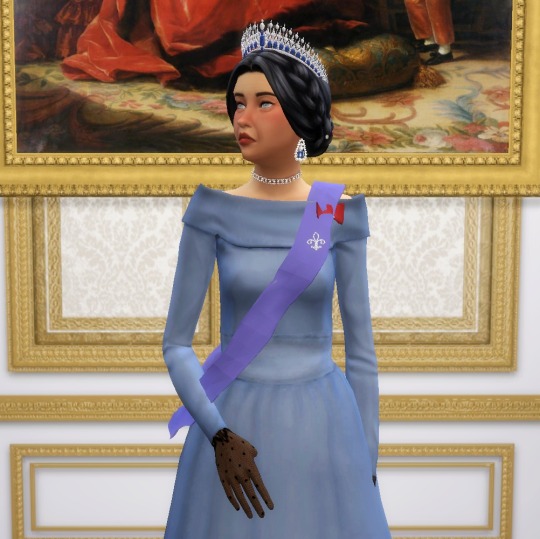

Name: Princess Andrea Anna Jacqueline Biancheri
Nickname: N/A
Title: Princess Consort of Moonwood Mill
Previous Names/ Titles: Lady Andrea Rinaldi
Residence(s): Villa des Rois, Moonwood Mill
Parents: Alexandre (Passed) & Jacqueline Rinaldi (Passed), Duke & Duchess LeGrande
Spouse: Hereditary Prince Pierre Biancheri
Children: Grand Duchess Martine Graziani, Duke Michel, & Duke Massimo Biancheri
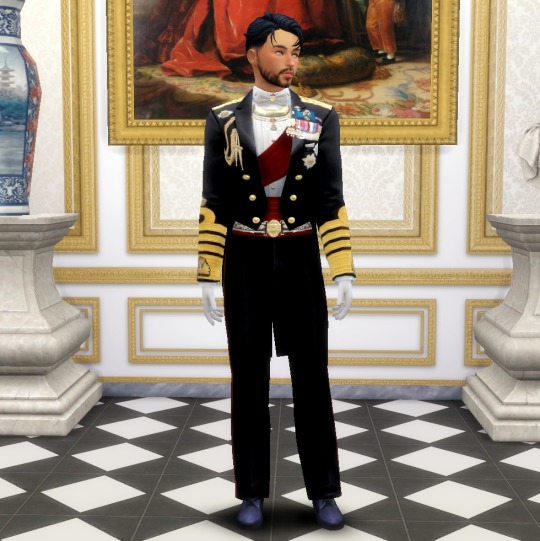

Name: Duke Michel Pierre Julien Biancheri
Nickname: N/A
Title: Duke Michel of Moonwood Mill
Previous Names/ Titles: N/A
Residence(s): Villa des Rois, Moonwood Mill
Parents: Hereditary Prince Pierre & Princess Andrea Biancheri
Spouse: N/A
Children: N/A
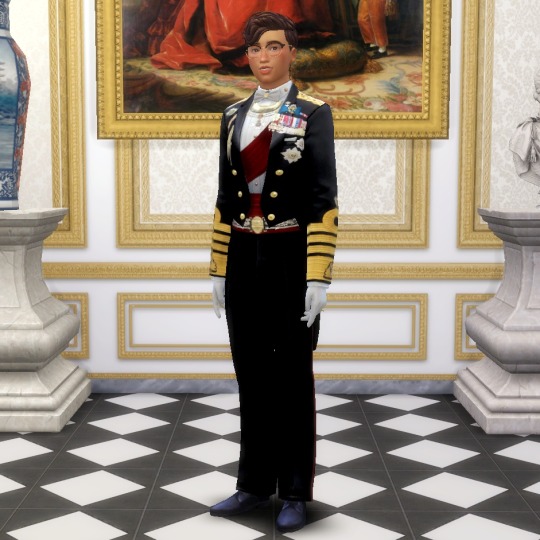
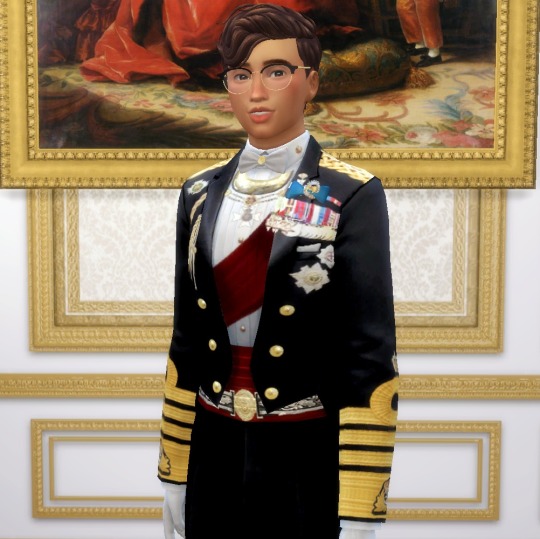
Name: Duke Massimo Andre Frederic Biancheri
Nickname: Mimo
Title: Duke Massimo of Moonwood Mill
Previous Names/ Titles: N/A
Residence(s): Villa des Rois, Moonwood Mill
Parents: Hereditary Prince Pierre & Princess Andrea Biancheri
Spouse: N/A
Children: N/A

#ivanov legacy#ts4#ts4 simblr#ts4 legacy#three year anniversary#hereditary prince pierre#princess andrea#duke michel#duke massimo
2 notes
·
View notes
Text




Happy 24th birthday to Princess Alexandra of Hanover!
Born on 20 July 1999, Alexandra Charlotte Ulrike Maryam Virginia is the of Princess Caroline of Monaco and Ernst August, Prince of Hanover, as well as a niece to Prince Albert II of Monaco and a granddaughter to Prince Rainier III and Grace Kelly. She is currently thirteenth in the line of succession to the Monegasque throne.
On her father's side, she is a descendant of Queen Victoria of the United Kingdom, Wilhelm II, German Emperor, and King Christian IX of Denmark. Through her father, she was in the line of succession to the British throne until 2018, when she was confirmed into the Catholic Church.
She has half-siblings from her parents' previous marriages. From her father's previous marriage, she has two half-brothers, Hereditary Prince Ernst August and Prince Christian of Hanover. From her mother's previous marriage, she has two half-brothers, Andrea and Pierre Casiraghi, and one half-sister, Charlotte Casiraghi.
17 notes
·
View notes
Photo
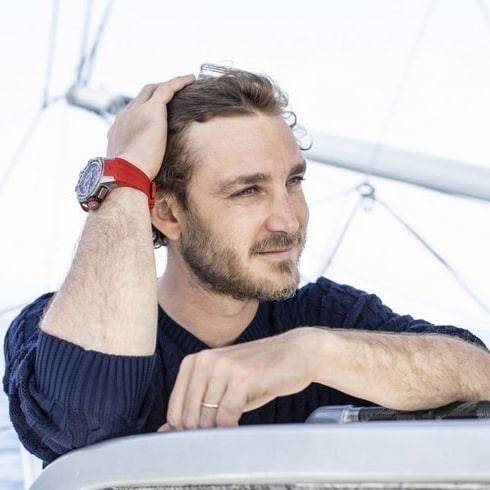
Happy 34th birthday to Pierre Casiraghi! 🥳 Born Pierre Rainier Stefano Casiraghi is the younger son and youngest of three children of Caroline, Princess of Hanover, and her second husband, Stefano Casiraghi. He is the maternal-line grandson of Rainier III, Prince of Monaco, and American actress Grace Kelly. Casiraghi is eighth in the line of succession to the Monegasque throne, following his twin cousins Hereditary Prince Jacques and Princess Gabriella, his mother, his brother Andrea, nephews Alexandre and Maximilian Casiraghi and niece India Casiraghi. Pierre Casiraghi has been in a relationship with the journalist Beatrice Borromeo since May 2008. They were married in a civil ceremony on 25 July 2015 in the gardens of the Prince's Palace of Monaco. The religious ceremony took place on Isola Bella on 1 August 2015. Among the wedding guests were John Elkann, Lapo Elkann and Diane von Fürstenberg. Pierre and Beatrice's first child, Stefano Ercole Carlo, was born on 28 February 2017. Their second child, Francesco Carlo Albert, was born on 21 May 2018. #RoyalBirthdays #RoyalBirth #MonacoRoyalFamily #MonacoRoyals #Monegasque #Grimaldi #PierreCasiraghi #Monarchy #EuropeanRoyalties https://www.instagram.com/p/CTbchfdFj6g/?utm_medium=tumblr
#royalbirthdays#royalbirth#monacoroyalfamily#monacoroyals#monegasque#grimaldi#pierrecasiraghi#monarchy#europeanroyalties
1 note
·
View note
Photo
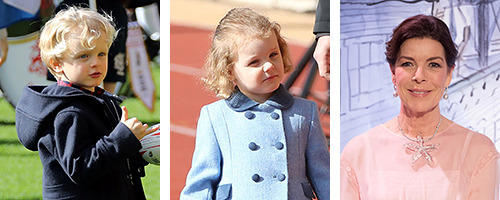

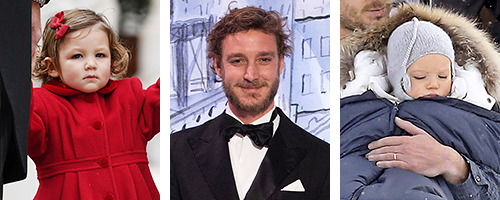
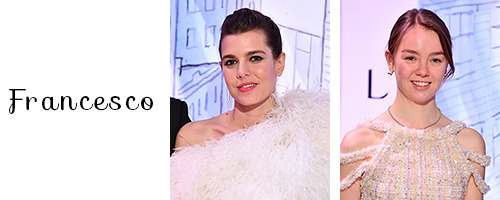

Line of Succession to the Monegasque throne after Prince Albert II:
Jacques, Hereditary Prince of Monaco, Marquis of Baux (b. 2014)
Princess Gabriella, Countess of Carladès (b. 2014)
Caroline, Princess of Hanover (b. 1957)
Andrea Casiraghi (b. 1984)
Alexandre Casiraghi (b. 2013)
Maximilian Casiraghi (b. 2018)
India Casiraghi (b. 2015)
Pierre Casiraghi (b. 1987)
Stefano Casiraghi (b. 2017)
Francesco Casiraghi (b. 2018)
Charlotte Casiraghi (b. 1986)
Princess Alexandra of Hanover (b. 1999)
Princess Stéphanie, Countess of Polignac (b. 1965)
Louis Ducruet (b. 1992)
Pauline Ducruet (b. 1994)
(Updated: May 2018)
#royaltyedit#monegasque princely family#prince jacques#princess gabriella#princess caroline#line of succession#mine#well charlotte's new baby will only be in line after she marries dmitri
35 notes
·
View notes
Link
Prince Albert of Monaco Fast Facts (CNN) — Here’s a look at the life of His Serene Highness, Prince Albert II. He was formally invested as Monaco’s ruler on July 12, 2005, following the death of his father, Prince Rainier. Birth date: March 14, 1958 Birth place: Monte Carlo, Monaco Birth name: Albert Alexandre Louis Pierre Grimaldi, His Serene Highness, the Hereditary Prince of Monaco, Marquis of Baux Father: Prince Rainier III Mother: Princess Grace, formerly the actress Grace Kelly Marriage: Charlene Wittstock (July 1, 2011-present) Children: with Charlene Wittstock: Princess Gabriella Therese Marie and Prince Jacques Honore Rainier; with Nicole Coste: Eric Alexandre Stephane; with Tamara Rotolo: Jazmin Grace Rotolo. Education: Amherst College, BA, 1981 Military service: French Navy He is interested in environmental issues, alternative energy and hybrid vehicles. An avid athlete, he has competed in five Winter Olympics (1988, 1992, 1994, 1998, 2002) in the sport of bobsledding but has not won any medals. He has been a member of the International Olympic Committee since 1985. His two oldest children are not in line for the throne because they were born out of wedlock. March 31, 2005 – Monaco’s Crown Council transfers the regency of the tiny kingdom to Prince Albert, the heir to the throne, saying that Prince Rainier can no longer carry out his duties as monarch. April 6, 2005 – Prince Rainier III dies of organ failure and Prince Albert becomes Albert II, Sovereign Prince of Monaco. July 6, 2005 – Publicly acknowledges paternity of his son, Alexandre, born to Nicole Coste, a flight attendant from Togo. July 12, 2005 – Part one of the formal investiture as Monaco’s ruler is Mass at St. Nicholas Cathedral, marking the end of the mourning period for Prince Rainier. November 17, 2005 – Part two of the formal investiture is the enthronement ceremony at St. Nicholas Cathedral. April 16, 2006 – Travels to the North Pole by dogsled to highlight global warming. June 1, 2006 – Acknowledges paternity of his daughter, Jazmin Grace Grimaldi, born to an American former waitress, Tamara Rotolo. March 2, 2007 – Presides over the opening ceremony in Paris of International Polar Year, a research program with a focus on the Polar Regions involving 50,000 scientists from 63 countries. January 28, 2008 – Is named as one of the United Nations Environment Programme’s (UNEP) “Champions of the Earth.” April 22 2008 – Receives the UNEP award which recognizes individuals who show extraordinary leadership on environmental issues. January 5-14, 2009 – Completes an expedition to the South Pole evaluating climate impact on Antarctica along the way. He is the only head of state to have visited both poles. June 23, 2010 – The palace announces Prince Albert’s engagement to Charlene Wittstock, 32, a former Olympic swimmer and school teacher from South Africa. July 1, 2011 – Prince Albert marries Charlene Wittstock in a civil wedding ceremony in the throne room of the Palace of Monaco. July 2, 2011 – A second wedding, a religious ceremony including Mass, is held in the main courtyard of the Palace of Monaco. The ceremony is broadcast to the 3,500 invited guests who could not fit inside the palace. October 2013 – Loans pieces of his private collection of Olympic torches for the Russian exhibition of Olympic torches. October 7, 2013 – Is one of the first torch bearers for the 2014 Sochi Olympic Winter Games. December 14, 2015 – Prince Albert is presented with the 2015 Global Advocate Award by UN Secretary General Ban Ki-moon for his work on climate change research and environmental conservation efforts. October 2016 – Buys his mother’s childhood home in Philadelphia, with the idea of turning it into a museum or offices for foundation work. Monaco is a sovereign principality, meaning it is ruled by a prince. It is the second smallest country in the world, after the Vatican. At 2.02 sq km (77 sq miles), Monaco is about half the size of New York’s Central Park. It sits on the French Riviera and is bordered on three sides by France. It is a popular tourist destination, famous for its casino and luxury hotels. Monaco is also the capital of the principality. The official language is French. The other major languages spoken are English and Italian. Monegasque, a mixture of the French Provencal and Italian Ligurian dialects, is also spoken there. Source link Orbem News #Albert #Facts #Fast #Monaco #Prince
0 notes